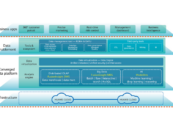 The banking Chief Innovation Officer, or CIO, has seen their role change in a very short space of time. It may even be argued that the modern demands of the bank CIO are so different to what came before that it is a brand new role in all but name. This article looks at this evolution of the CIO role in banking and why they hold the key to the future success of banks, what the future CIO might look like, and the 6 key qualities of a brilliant CIO.
The banking Chief Innovation Officer, or CIO, has seen their role change in a very short space of time. It may even be argued that the modern demands of the bank CIO are so different to what came before that it is a brand new role in all but name. This article looks at this evolution of the CIO role in banking and why they hold the key to the future success of banks, what the future CIO might look like, and the 6 key qualities of a brilliant CIO.
The evolution of the Chief Innovation Officer
The changes to the CIO role are mainly due to the rapid rise of technology in the financial sector and indeed, in every area of society really. This is only set to rise further and quicker, with the onset of AI and machine learning.
Not only do consumers now demand more technology-driven banking experiences, but the rise of fintech is a game-changer, making innovation an urgent banking priority.
The banking CIO of yesteryear dealt with back office tasks such as maintenance of supply chains, network speed and computer infrastructure. As such tasks are now largely automated and banks are under increasing pressure to deliver a better, more digitalized product, the CIO is now tasked with ensuring product performance and UX satisfaction.
They have to do this all the while working with legacy systems within institutions that are frankly not used to, or inclined to, change.
Do banks really need a CIO?
The CIO “is probably going to be the most important job in the future bank,” says Chris Skinner, prominent banking commentator. Banks make up what has always been an inherently change-averse sector. While this approach worked for so long, the scarcity of disruptive technology throughout the history of the finance sector meant there was no need to innovative in order to drive bank business success.
They were profitable come what may. There was no need to innovate. There was no need to differentiate offering. But now, this is simply not the case.
Threats that necessitate an innovation-led response
Consumer demand for new technology has been galvanized by the burgeoning fintech sector across the globe.
This has created new competitors for banks – third party financial service providers and fledgling fintech banks seeking to leverage new technologies to bite into the traditional banking sector’s market share.
Then there is the threat that banks face from other incumbent banks hard at work on innovating themselves. After all, it will be the bank that truly knows and helps their customer that will be successful, and this will depend on innovation.
Banks don’t only need a CIO. Creating an innovation department does not an innovative organization make. But in order to become that innovative organization, it must begin with the CIO. They must see the CIO for what they he or she really is now: the driver of future banking success in the technology-driven age.
How will the CIO guide the financial sector into the future?
The kingmakers in the future of the financial sector will be those who truly know their customer and successfully monetize opportunity through delivering financial products that the customer really wants. This is why the third wave of fintech that we are entering into will be marked by a widespread collaboration between fintech companies and incumbent banks.
Banks need fintechs to understand their customers. It will be the savvy chief innovation officer who not only realises this but knows which fintech partnerships to pursue in the interests of driving their bank’s success.
Competition between banks and fintechs is turning to collaboration in many financial verticals. It’s a win-win for both parties involved. Banks leverage fintech agility and high tech capabilities to create a closer relationship with the customer and fintechs advance their technology solutions within the financial sector.
How can the CIO spot the right fintech collaborations?
To improve user experience and create a closer relationship with their bank’s customer, the Chief Innovation Officer constantly seeks to improve their product. While assessing each financial product that their bank offers, the CIO is faced with the challenge of how to improve it in line with what the customer truly wants. This is anything but an easy task, which will only become more complex as we enter a 24/7 banking-as-a-platform era.
But fintechs have a greater understanding of the customer through technologies including AI, machine learning and big data analytics. By looking for the knowledge they need to improve their products, the CIO then knows what type of fintech to collaborate with, and can set about the process of truly innovating their bank’s products.
What will the future CIO look like?

If Chris Skinner is right, the future bank CIO may not be a CIO at all. Their role will primarily be that of change agent, where banking-as-a-platform leads the way in the new customer-centric banking era. Once this transition period is complete, it will herald yet another change in the CIO role to what Skinner likens to a “Chief Conductor.”
This Chief Conductor will have to smoothly manage needs across back, middle and front office, to continue a perpetual upward-moving innovation trajectory. Innovation and the perpetual search for more efficient, helpful products will ensure that the CIO will be front and center of every serious bank strategy in the world.
The top-down hierarchical structure of banks, which helps them to keep total control centralized, will have to give way to a shared structure. Digital banking will be so demanding that banks will have no choice but to disperse control among their various divisions.
Each department, team and member will own their role. The CIO will likely be the great delegator, overseeing a marvellous cohesive unit of parts work together, based on a relinquishing of centralized control and a culture of trust and ownership.
Article first appeard on – blog.strands.com
Featured picture by jarmoluk via Pixabay.com








